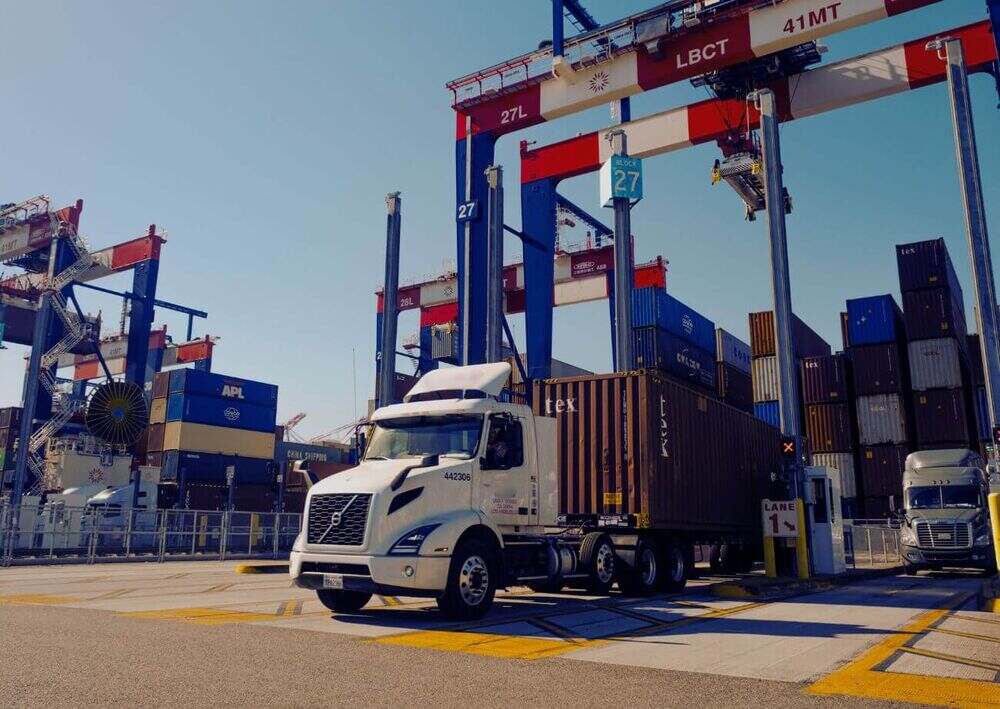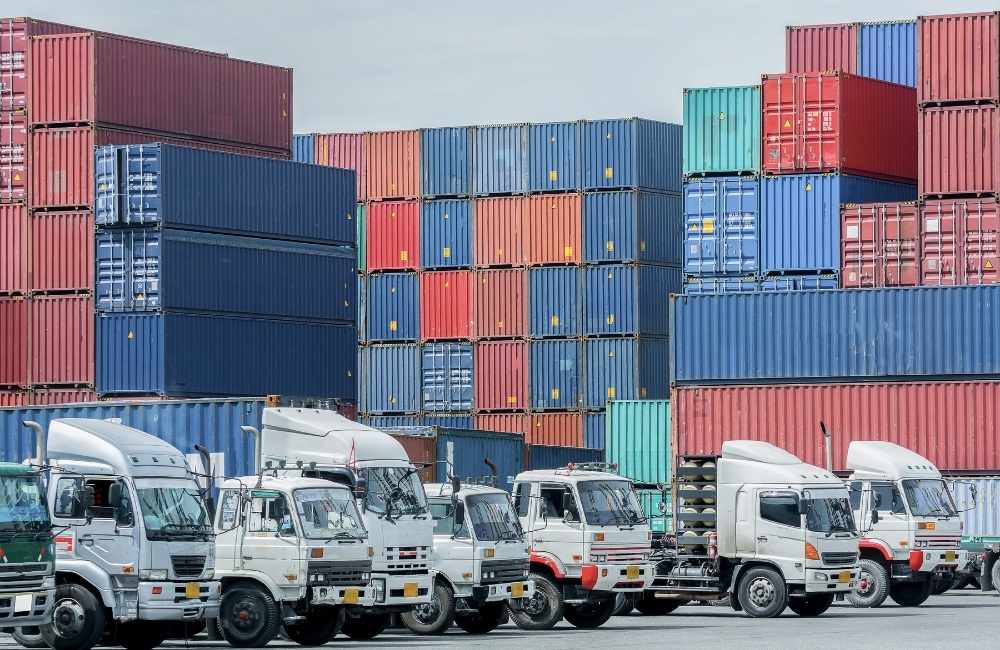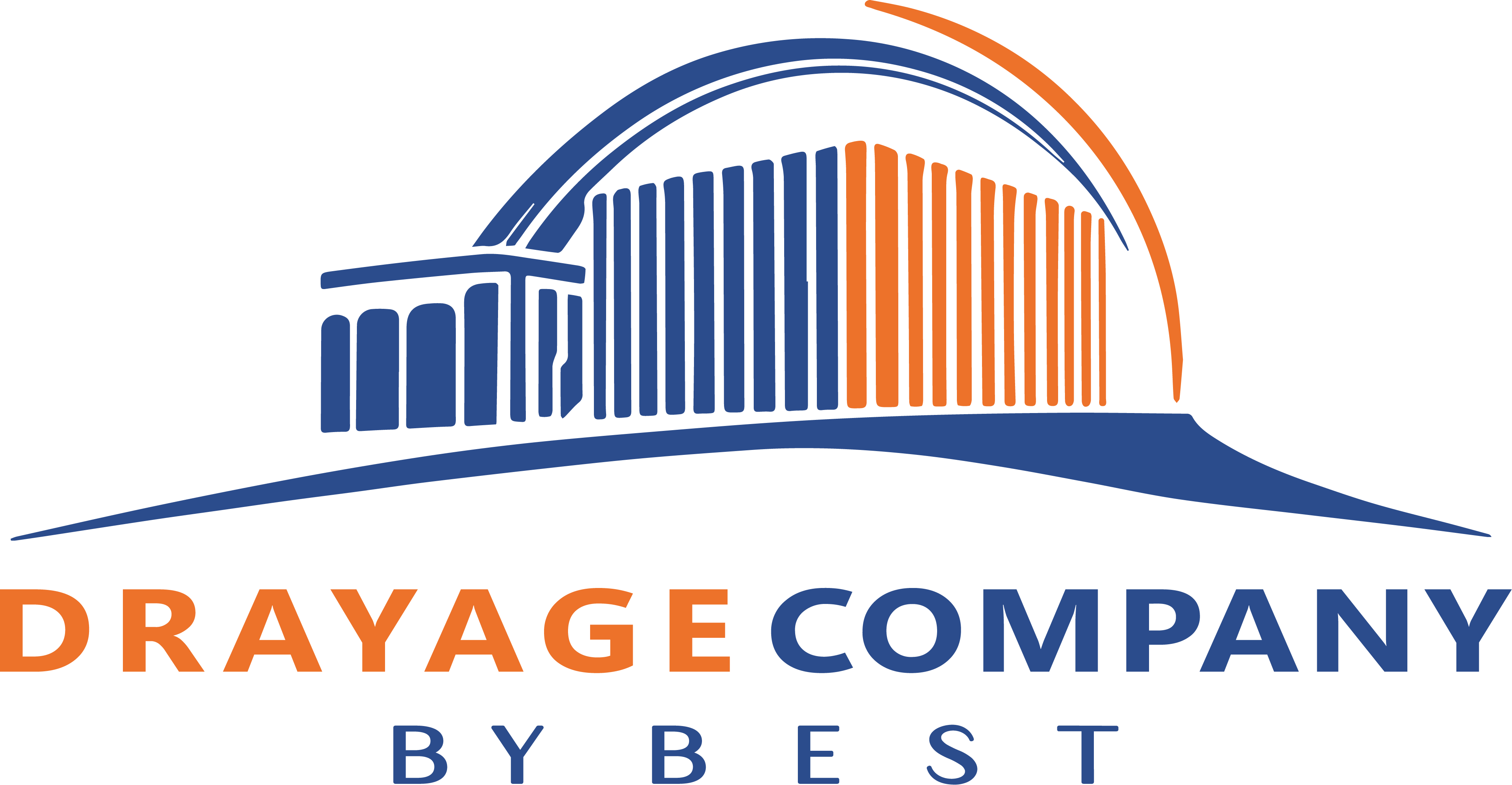Freight logistics keeps supply chains running by making sure goods move smoothly from one point to another, whether across town or the country. At the heart of this process is the challenge of matching available loads with trucks heading in the right direction. For many businesses, especially those managing drayage and short-haul operations, speed and accuracy in freight coordination can make or break delivery schedules.
Here are five key things to know about loadboards and their role in modern freight logistics.
Table of Contents
Key Takeaways✔ Loadboards are digital platforms that connect shippers, brokers, and carriers to streamline freight logistics. ✔ Drayage services benefit from loadboards by matching time-sensitive container loads with nearby carriers. ✔ Businesses can use loadboard filters to find professional, port-experienced drayage providers fast. ✔ Real-time data and carrier profiles help shippers evaluate reliability before booking. ✔ Loadboards support flexibility during peak shipping seasons or unexpected delays. ✔ Integrations with TMS and warehouse systems enhance efficiency in freight planning. ✔ Using load boards alongside direct contracts creates a stronger, more adaptable logistics strategy. |

What Is a Loadboard and Why Do Carriers Use It?
What is a loadboard in freight logistics? A loadboard is a web-based platform or mobile app that serves as a centralized digital marketplace where shippers, freight brokers, and carriers connect to post, search, and book available freight loads.
Designed to match real-time truck capacity with shipments, load boards streamline freight coordination by reducing empty miles, providing access to new lanes, and offering instant visibility into time-sensitive shipping opportunities.
They are essential tools for small fleets and independent owner-operators seeking flexibility, competitive rates, and access to a broader freight network. The freight and logistics market, valued at approximately $6.38 trillion, relies heavily on loadboards to maintain speed, efficiency, and adaptability across supply chains.
Key Features of Loadboards
- Load Search & Posting Tools: Carriers can search for freight by origin, destination, equipment type, and rate, while brokers and shippers post loads in real time. This ensures immediate visibility and helps fill capacity quickly.
- Carrier & Broker Profiles: Profiles display FMCSA credentials, insurance, safety ratings, and service history. This transparency builds trust and helps users avoid unreliable partners.
- Rate Forecasting & Market Trends: Many platforms offer real-time and historical rate analytics to support smarter pricing decisions. Carriers and shippers use these insights to stay competitive and budget effectively.
- Document Management: Digital uploads of Bills of Lading (BOL), Proofs of Delivery (POD), and invoices simplify operations. It keeps all freight documentation centralized, organized, and accessible.
- Credit Checks & Payment Insights: Loadboards often show broker credit scores, average pay times, and transaction reliability. This helps carriers assess financial risk before accepting a load.
- In-Platform Messaging & Alerts: Real-time chat and notification tools allow direct communication between users. Quick response times speed up booking and clarify load requirements on the spot.
5 Key Things to Know About Loadboards in Freight Logistics
1. Loadboards Connect Shippers, Brokers, and Carriers
A loadboard acts as a digital meeting place where freight moves are posted, searched, and booked. It’s a central tool in freight logistics that helps companies keep trucks full and shipments on schedule. For businesses relying on drayage services, using a loadboard can bridge the gap between cargo sitting at a terminal and trucks ready to haul.
Why Loadboards Make Freight Connections Work
- Postings Match Real-Time Needs: When a shipper has freight ready, they post details like load type, pickup location, and delivery window. Carriers looking for freight can search and respond instantly, cutting down time spent on empty hauls.
- Profiles Build Trust Between Parties: Loadboards let users view safety records, reviews, and transaction histories. This helps businesses choose reliable partners and avoid fly-by-night carriers or brokers.
- Direct Communication Speeds Up Booking: Many loadboards offer built-in messaging or call features. This allows shippers and carriers to quickly clarify load details and confirm bookings without waiting on email chains.
2. Loadboards Support Drayage Operations at Ports and Terminals
Drayage is a time-sensitive segment of freight logistics, involving short hauls between ports, rail yards, and distribution hubs. Loadboards make it easier for businesses to find drayage carriers quickly and reduce delays caused by congestion or limited equipment availability. For companies managing frequent container pickups and drop-offs, this digital tool can streamline coordination and cut downtime.

How to Improve Drayage Efficiency with Loadboards
- Find Local Drayage Carriers Fast: Loadboards let businesses post container-ready freight with specific time windows and locations. Carriers near ports or terminals can accept these jobs quickly, reducing idle container time and avoiding storage fees.
- Track Time-Sensitive Loads in Real Time: Many loadboards offer GPS tracking or integrate with fleet management systems, giving shippers real-time visibility into truck movements—an increasingly vital feature as 70% of American consumers now expect real-time tracking.
- Connect with Drayage Specialists: Some loadboards allow filtering by equipment type or carrier specialization. This helps businesses find drivers familiar with intermodal yards, TWIC requirements, and local port procedures—critical for smooth drayage services.
3. Loadboards Offer Tools Beyond Load Matching
Modern freight load boards are more than just digital bulletin boards—they come packed with tools that help businesses manage shipments, analyze trends, and stay compliant. These extra features can improve decision-making and streamline day-to-day logistics tasks. For companies juggling multiple drayage or over-the-road moves, having access to these tools in one place saves time and money.
Why Loadboards Add Value Through Extra Tools
- Rate Forecasts Help With Budgeting: Many platforms provide rate trend data based on historical and real-time inputs. Businesses can use this to plan freight costs and avoid overpaying during market surges.
- Document Uploads Simplify Operations: Loadboards often allow digital uploads for BOLs, PODs, and invoices. This eliminates paperwork delays and keeps all freight documents accessible in one secure platform.
- Credit Checks Reduce Payment Risks: Before accepting a load, users can view the shipper or broker’s credit rating. This helps carriers avoid late payments and supports healthier business relationships.

4. Loadboards Create More Opportunities for Small Carriers
For small trucking companies and independent owner-operators, loadboards level the playing field. These tools provide access to a wide range of freight, allowing smaller players to compete with larger fleets. By tapping into consistent postings, small carriers can keep their trucks moving without relying solely on long-term contracts.
How Loadboards Empower Small Fleets
- Access to a Steady Flow of Freight: Loadboards give smaller carriers exposure to thousands of available loads daily. This can help fill backhauls or book last-minute jobs when regular work slows down.
- Flexible Work Based on Lane Preferences: Carriers can search by zip code, region, or lane to focus on preferred routes. This flexibility helps small operators maintain efficiency without stretching beyond their capabilities.
- Build Relationships With New Brokers and Shippers: Frequent loadboard use introduces carriers to new business partners. Understanding what a loadboard is used for in the trucking industry reveals its value in building long-term relationships. Over time, this can lead to repeat business, negotiated rates, and fewer gaps between jobs.
5. Loadboards Are a Starting Point, Not a Full Strategy
While loadboards offer speed and flexibility, they shouldn’t be the only source for securing freight. Businesses that rely solely on freight matching platforms may face rate instability, inconsistent volume, or weaker customer relationships. The most successful logistics teams use loadboards as part of a broader freight logistics plan.
How to Use Loadboards Wisely in a Freight Strategy
- Combine Loadboards With Direct Contracts: Building relationships with carriers and brokers ensures dependable volume. Loadboards can supplement these contracts, especially during seasonal spikes or emergencies.
- Use Loadboards to Test New Lanes: Before committing to a new shipping lane, companies can post loads to see carrier interest and rate trends. This low-risk approach helps inform long-term expansion decisions.
- Monitor Platform Quality Over Time: Not all loadboards offer the same user experience or load quality. Businesses should regularly evaluate whether the platform aligns with their service area, freight type, and growth goals.

What Is a Loadboard and Why Do Carriers Use It?
What is a loadboard in freight logistics? A loadboard is a web-based platform or mobile app that serves as a centralized digital marketplace where shippers, freight brokers, and carriers connect to post, search, and book available freight loads.
Designed to match real-time truck capacity with shipments, load boards streamline freight coordination by reducing empty miles, providing access to new lanes, and offering instant visibility into time-sensitive shipping opportunities.
They are essential tools for small fleets and independent owner-operators seeking flexibility, competitive rates, and access to a broader freight network. The freight and logistics market, valued at approximately $6.38 trillion, relies heavily on loadboards to maintain speed, efficiency, and adaptability across supply chains.
Key Features of Loadboards
- Load Search & Posting Tools: Carriers can search for freight by origin, destination, equipment type, and rate, while brokers and shippers post loads in real time. This ensures immediate visibility and helps fill capacity quickly.
- Carrier & Broker Profiles: Profiles display FMCSA credentials, insurance, safety ratings, and service history. This transparency builds trust and helps users avoid unreliable partners.
- Rate Forecasting & Market Trends: Many platforms offer real-time and historical rate analytics to support smarter pricing decisions. Carriers and shippers use these insights to stay competitive and budget effectively.
- Document Management: Digital uploads of Bills of Lading (BOL), Proofs of Delivery (POD), and invoices simplify operations. It keeps all freight documentation centralized, organized, and accessible.
- Credit Checks & Payment Insights: Loadboards often show broker credit scores, average pay times, and transaction reliability. This helps carriers assess financial risk before accepting a load.
- In-Platform Messaging & Alerts: Real-time chat and notification tools allow direct communication between users. Quick response times speed up booking and clarify load requirements on the spot.
5 Key Things to Know About Loadboards in Freight Logistics
1. Loadboards Connect Shippers, Brokers, and Carriers
A loadboard acts as a digital meeting place where freight moves are posted, searched, and booked. It’s a central tool in freight logistics that helps companies keep trucks full and shipments on schedule. For businesses relying on drayage services, using a loadboard can bridge the gap between cargo sitting at a terminal and trucks ready to haul.
Why Loadboards Make Freight Connections Work
- Postings Match Real-Time Needs: When a shipper has freight ready, they post details like load type, pickup location, and delivery window. Carriers looking for freight can search and respond instantly, cutting down time spent on empty hauls.
- Profiles Build Trust Between Parties: Loadboards let users view safety records, reviews, and transaction histories. This helps businesses choose reliable partners and avoid fly-by-night carriers or brokers.
- Direct Communication Speeds Up Booking: Many loadboards offer built-in messaging or call features. This allows shippers and carriers to quickly clarify load details and confirm bookings without waiting on email chains.
2. Loadboards Support Drayage Operations at Ports and Terminals
Drayage is a time-sensitive segment of freight logistics, involving short hauls between ports, rail yards, and distribution hubs. Loadboards make it easier for businesses to find drayage carriers quickly and reduce delays caused by congestion or limited equipment availability. For companies managing frequent container pickups and drop-offs, this digital tool can streamline coordination and cut downtime.

How to Improve Drayage Efficiency with Loadboards
- Find Local Drayage Carriers Fast: Loadboards let businesses post container-ready freight with specific time windows and locations. Carriers near ports or terminals can accept these jobs quickly, reducing idle container time and avoiding storage fees.
- Track Time-Sensitive Loads in Real Time: Many loadboards offer GPS tracking or integrate with fleet management systems, giving shippers real-time visibility into truck movements—an increasingly vital feature as 70% of American consumers now expect real-time tracking.
- Connect with Drayage Specialists: Some loadboards allow filtering by equipment type or carrier specialization. This helps businesses find drivers familiar with intermodal yards, TWIC requirements, and local port procedures—critical for smooth drayage services.
3. Loadboards Offer Tools Beyond Load Matching
Modern freight load boards are more than just digital bulletin boards—they come packed with tools that help businesses manage shipments, analyze trends, and stay compliant. These extra features can improve decision-making and streamline day-to-day logistics tasks. For companies juggling multiple drayage or over-the-road moves, having access to these tools in one place saves time and money.
Why Loadboards Add Value Through Extra Tools
- Rate Forecasts Help With Budgeting: Many platforms provide rate trend data based on historical and real-time inputs. Businesses can use this to plan freight costs and avoid overpaying during market surges.
- Document Uploads Simplify Operations: Loadboards often allow digital uploads for BOLs, PODs, and invoices. This eliminates paperwork delays and keeps all freight documents accessible in one secure platform.
- Credit Checks Reduce Payment Risks: Before accepting a load, users can view the shipper or broker’s credit rating. This helps carriers avoid late payments and supports healthier business relationships.

4. Loadboards Create More Opportunities for Small Carriers
For small trucking companies and independent owner-operators, loadboards level the playing field. These tools provide access to a wide range of freight, allowing smaller players to compete with larger fleets. By tapping into consistent postings, small carriers can keep their trucks moving without relying solely on long-term contracts.
How Loadboards Empower Small Fleets
- Access to a Steady Flow of Freight: Loadboards give smaller carriers exposure to thousands of available loads daily. This can help fill backhauls or book last-minute jobs when regular work slows down.
- Flexible Work Based on Lane Preferences: Carriers can search by zip code, region, or lane to focus on preferred routes. This flexibility helps small operators maintain efficiency without stretching beyond their capabilities.
- Build Relationships With New Brokers and Shippers: Frequent loadboard use introduces carriers to new business partners. Understanding what a loadboard is used for in the trucking industry reveals its value in building long-term relationships. Over time, this can lead to repeat business, negotiated rates, and fewer gaps between jobs.
5. Loadboards Are a Starting Point, Not a Full Strategy
While loadboards offer speed and flexibility, they shouldn’t be the only source for securing freight. Businesses that rely solely on freight matching platforms may face rate instability, inconsistent volume, or weaker customer relationships. The most successful logistics teams use loadboards as part of a broader freight logistics plan.
How to Use Loadboards Wisely in a Freight Strategy
- Combine Loadboards With Direct Contracts: Building relationships with carriers and brokers ensures dependable volume. Loadboards can supplement these contracts, especially during seasonal spikes or emergencies.
- Use Loadboards to Test New Lanes: Before committing to a new shipping lane, companies can post loads to see carrier interest and rate trends. This low-risk approach helps inform long-term expansion decisions.
- Monitor Platform Quality Over Time: Not all loadboards offer the same user experience or load quality. Businesses should regularly evaluate whether the platform aligns with their service area, freight type, and growth goals.
6 Limitations and Challenges of Loadboards to Prepare For
Loadboards have transformed freight logistics by making load-matching faster and more accessible—but they’re not without challenges. Understanding the limitations of these platforms helps businesses what is a loadboard in freight logistics, but also how to use them wisely.
Below are six key concerns that carriers and shippers should keep in mind when relying on loadboards for freight planning:
1. Intense Competition for High-Quality Loads
On popular loadboards, multiple carriers often compete for the same desirable loads—especially high-paying or time-sensitive shipments. This leads to price undercutting and a race to the bottom that can erode profitability for small and mid-sized fleets. When evaluating what a loadboard is and why carriers use it, it’s clear that access doesn’t always equal opportunity.
2. Unstable Spot Market Rates
Loadboards primarily operate in the spot freight market, where rates can vary wildly based on supply, demand, and seasonality. This unpredictability makes it difficult for carriers to plan ahead or maintain consistent margins. Businesses learning what a loadboard is in freight logistics should consider pairing it with contract freight for better rate stability.
3. Risk of Fraud and Double Brokering
Public loadboards may attract bad actors who engage in double brokering, identity theft, or fake load postings. Without strict vetting and due diligence, carriers can fall victim to non-payment or legal disputes. While understanding what a loadboard is and why carriers use it, it’s equally important to ask how secure and trustworthy the platform is.
4. Limited Long-Term Relationship Building
Because transactions on loadboards are often one-off or short-term, it’s harder to build long-term relationships with shippers or brokers. This limits opportunities for negotiated rates, recurring business, and dedicated lanes. For companies exploring what a loadboard is in freight logistics, it’s crucial to view it as a supplement—not a substitute—for strategic partnerships.
5. Inconsistent Load Quality and Transparency
Not all load postings come with clear details like freight type, delivery expectations, or pickup requirements. This lack of transparency can lead to inefficiencies, delays, or unexpected costs at pickup or drop-off. When considering what a loadboard is and why carriers use it, businesses must also weigh the risk of inconsistent load quality.
6. Over-Reliance Can Lead to Operational Gaps
Relying solely on loadboards can leave carriers vulnerable to low volume periods, market downturns, or system outages. Without a diversified freight acquisition strategy, businesses may struggle to maintain cash flow or asset utilization. For those asking what a loadboard is in freight logistics, the answer must include its role as a tool—not a total solution.

How to Use a Loadboard to Find Drayage Carriers Near Ports or Rail Yards
For businesses managing container freight, timing is everything. Delays at ports and intermodal terminals can lead to storage fees, missed delivery windows, and downstream bottlenecks. Using a loadboard effectively can help logistics teams connect with professional drayage carriers who know the local terrain, understand port protocols, and can move freight on schedule.
1. Filter by Geographic Location and Equipment
Most loadboards allow users to filter available carriers by ZIP code, metro area, or proximity to specific ports or rail yards. This feature helps businesses narrow the search to local drivers already operating in the area, reducing wait times. Filtering by equipment—like chassis availability or container size compatibility—ensures only suitable carriers are considered.
2. Search for Carriers With Port Credentials
Many professional drayage carriers list credentials such as TWIC certification, SCAC codes, and terminal access in their profiles. These details are essential when working in restricted zones like marine terminals or secure rail facilities. Using a loadboard to verify access ensures smoother pickups and prevents scheduling conflicts at the gate.
3. Review Carrier History and Performance Ratings
Loadboards often include user reviews, service ratings, and performance summaries. What is a loadboard used for in the trucking industry? One key use is helping businesses identify reliable carriers. Companies should prioritize carriers with strong histories in drayage work—especially those with experience at the specific port or terminal in question. This reduces the risk of delays and builds confidence in the provider’s ability to meet strict timing requirements.
4. Post Specific Drayage Load Details
When posting a container load, include exact pickup times, terminal name, container number, and any hold status. The more precise the listing, the faster a qualified carrier can commit and prepare. Working with professionals starts with clear expectations—and good carriers are more likely to respond when listings reflect operational realities.
5. Use Loadboard Messaging to Confirm Availability and Readiness
Before finalizing any booking, use in-platform messaging or contact details to confirm that the carrier is available and properly equipped. A short conversation can clarify chassis requirements, free time limits, or special instructions. Engaging directly helps filter out unreliable options and builds early trust with experienced drayage partners.
How to Evaluate Drayage Providers Using Loadboard Insights
When time, cargo, and customer expectations are on the line, businesses can’t afford to guess when selecting a drayage provider. Loadboards provide detailed insights that help logistics teams make informed decisions. By knowing what to look for, companies can use these tools to identify trustworthy partners and avoid unnecessary delays or costly mistakes.
1. Check Carrier Safety Ratings and Operating Authority
Loadboards often include DOT safety ratings, insurance information, and operating authority. These details confirm whether a drayage provider is fully licensed and compliant with federal regulations. Verifying this information ensures the business is working with professionals who prioritize safety and reliability in freight logistics.
2. Review Service History and Customer Feedback
Past reviews and service ratings give a snapshot of how a carrier performs under pressure. Businesses can use this data to evaluate punctuality, communication, and cargo handling practices—especially on drayage routes with strict terminal schedules. Patterns in feedback often reveal whether a provider consistently meets expectations or struggles with follow-through.
3. Confirm Port and Rail Experience
Experienced drayage carriers will usually indicate whether they operate in specific ports, intermodal yards, or terminals. Loadboards allow businesses to filter by location or search carrier profiles for regional experience. This is especially valuable for businesses wondering what a loadboard is used for in the trucking industry when it comes to port-specific drayage services.
4. Look at Equipment Details and Capacity
Knowing whether a provider has chassis availability, container handling experience, or access to specific gear can make or break a move. Loadboards often list equipment types and capacity limits in each carrier profile. This helps logistics teams select a provider who is actually capable of executing the job—not just accepting it.
5. Monitor Responsiveness and Communication Style
Some loadboards track average response times or allow messaging directly through the platform. Businesses can assess how quickly carriers respond to inquiries or clarify questions about load details. Carriers who are prompt, clear, and courteous often reflect the level of professionalism needed for successful drayage execution.
Frequently Asked Questions (FAQs)
Can loadboards help manage seasonal spikes in shipping volume?
Yes, loadboards are especially helpful during peak shipping seasons when demand for freight services surges. They provide flexible access to available carriers, allowing businesses to fill capacity gaps quickly without long-term commitments. In freight logistics, this makes loadboards a valuable backup resource for managing high-volume drayage services during seasonal rushes.
Are there industry-specific loadboards for specialized freight?
Yes, several loadboards cater to niche markets such as refrigerated goods, hazardous materials, or over-dimensional loads. For businesses in freight logistics that require specialized handling, these platforms help connect with carriers trained and equipped for those needs. This applies even in drayage services where specific cargo types may require unique equipment or certifications.
Do loadboards offer integrations with warehouse or inventory systems?
Some advanced freight load boards offer integrations with warehouse management systems (WMS) or inventory tracking software. These integrations help businesses coordinate shipments more efficiently by aligning outbound freight with warehouse readiness. This is particularly useful in freight logistics where timing is critical between warehouse release and drayage pickup.
Can loadboards be used to manage international container drayage?
Yes, loadboards can support international freight moves by helping businesses find drayage carriers near ports of entry. While they don’t handle customs clearance, they connect companies with local professionals experienced in moving import/export containers. For businesses wondering what is a loadboard used for in the trucking industry, international drayage is a key application.
Are there security risks when using loadboards?
Like any online platform, freight load boards can carry risks such as double-brokering or identity fraud if not used carefully. Reputable loadboards offer vetting tools, user verification, and credit checks to help businesses avoid unreliable carriers. Working with trusted platforms and professional drayage providers helps maintain integrity in freight logistics operations.

Move Freight Smarter with Drayage Company By Best in New York City
Keep your containers moving on time with Drayage Company By Best—New York City’s trusted partner for fast, reliable drayage services. Whether you’re coordinating port pickups, rail transfers, or last-mile deliveries, our experienced team knows how to navigate the city’s logistics with precision and care. We work with businesses of all sizes to reduce dwell time, avoid storage fees, and streamline freight logistics from terminal to dock.
Partner with professionals who understand the urgency, and let Drayage Company By Best keep your freight on track.

